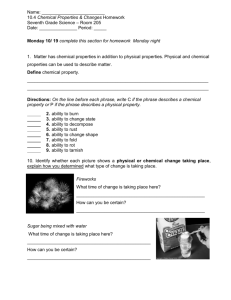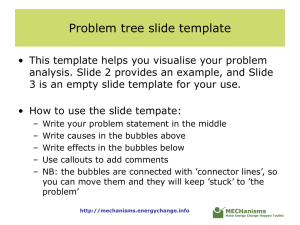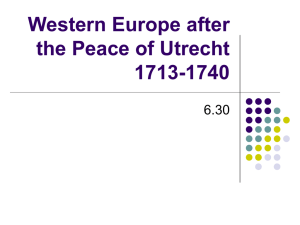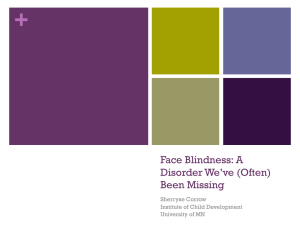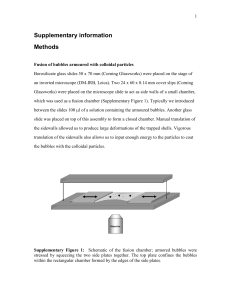SupplementalMaterial_Royer2015
advertisement
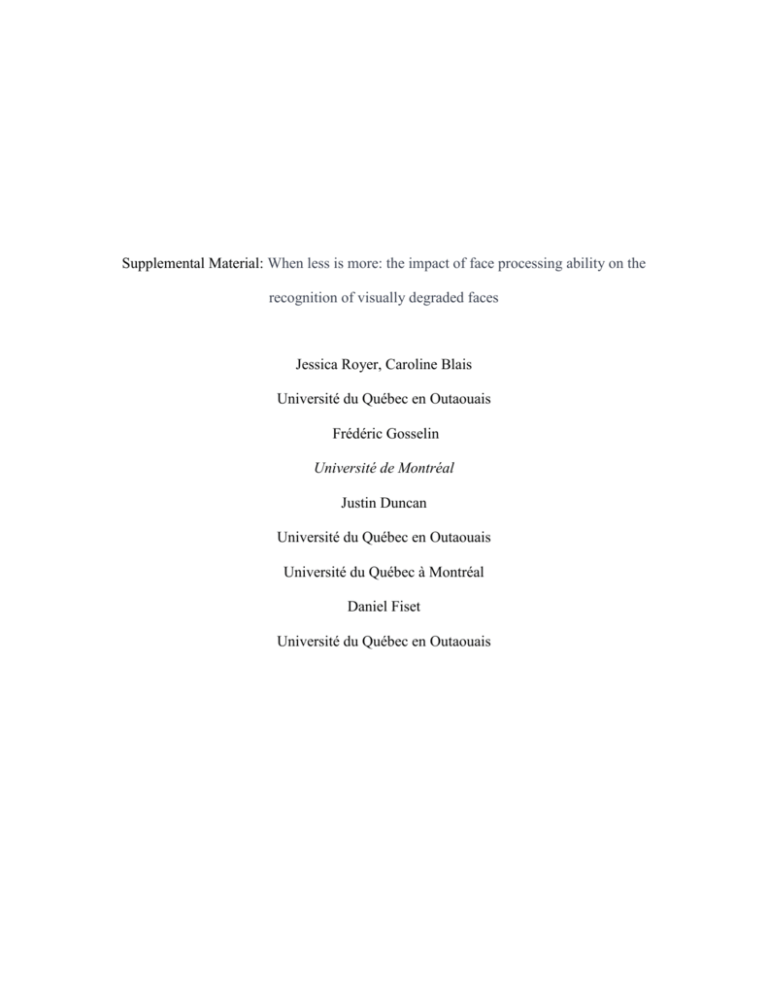
Supplemental Material: When less is more: the impact of face processing ability on the recognition of visually degraded faces Jessica Royer, Caroline Blais Université du Québec en Outaouais Frédéric Gosselin Université de Montréal Justin Duncan Université du Québec en Outaouais Université du Québec à Montréal Daniel Fiset Université du Québec en Outaouais Methods: Supplementary Information The following sections briefly describe the nature of each face and object recognition task administered to our participants, as well as stimulus examples and an illustrated outline of a trial of the Bubbles task. Cambridge Face Memory Test + (CFMT+) The CFMT+ (Duchaine & Nakayama, 2006; Russell et al., 2009) follows a 3-AFC, match-to-sample design using six different unfamiliar male faces from three angles (frontal view, left and right sides; Duchaine & Nakayama, 2006). The test sets are presented under variable forms of visual degradation, in ascending order of difficulty. The CFMT+ is an adapted version of the CFMT (Duchaine & Nakayama, 2006) containing an additional final section; with the addition of this section, each participant completes a total of 102 test trials. We decided to use the long form of the CFMT as opposed to its short version because of its greater sensitivity in discriminating normal and super-recognizer individuals (Russell et al., 2009). Performance is measured using the percentage of correct responses. Cambridge Face Perception Test (CFPT) The CFPT (Duchaine, Germine, & Nakayama, 2007) is a computerized sorting task in which subjects are asked to rearrange six test faces according to their similarity to a target face. Participants have a maximum of one minute to complete each trial. The test faces were generated by morphing the target face with 6 different faces; the percentage of the target face contained in each test face ranges from 28% to 86% (in intervals of 8%). Participants must complete 8 trials in which the faces are presented upright, and 8 where they are presented upside-down, for a total of 16 trials. Performance was measured using the total deviation from the correct face arrangement; thus, higher scores mean worse performance. Glasgow Face Matching Test, short version (GFMT) The GFMT (Burton, White, & McNeil, 2010) requires participants to judge whether the two unfamiliar faces shown on screen are same or different identities. Both faces are presented in the same viewpoint, but the photographs were taken with different cameras. We used the short form (40 trials) of the test to minimize the duration of the testing session. Participants were instructed to respond as accurately and as fast as possible. Performance was indexed using the percentage of correct responses. At first glance, this test appears to be quite simple; however, large individual differences are observed in our results, indicating that some participants indeed find this task difficult. Horse Memory Test (HMT) The HMT (Duchaine & Nakayama, 2005) is an Old-New type task. During the study phase, participants were exposed twice to ten horse figurines, each on screen for three seconds. During the test phase, participants were instructed to indicate whether the item on screen was a target or non-target as quickly and as accurately as possible. The number of test items was 50: the 10 target items each appeared twice and 30 non-targets each appeared once. Performance was measured using A’, an unbiased measure of discrimination (Macmillan & Creelman, 1991). Cambridge Car Memory Test (CCMT) The CCMT (Dennett et al., 2012) follows the same design as the CFMT, but uses cars instead of faces. Participants are asked to learn six car exemplars and, on each trial, must discriminate the target car from two distractors. The CCMT is divided into three sections of 18, 30 and 24 trials each, for a total of 72 trials. Performance is measured using the percentage of correct responses. Cambridge Hair Memory Test (CHMT) The CHMT (Garrido et al., 2009) follows the same design as the CFMT and CCMT, but uses hair crops as stimuli. Participants are asked to learn six hair crop exemplars and, on each trial, must discriminate the target hair crop from two distractors. Like the CCMT, The CHMT is divided into three sections of 18, 30 and 24 trials each, for a total of 72 trials. Performance is measured using the proportion of correct responses. Trial course of the Bubbles Task A fixation point initiated each trial, on screen for 500 ms. Then, one of the 30 possible identities (i.e. the study face) was presented for the same duration. The study face's pose was randomly chosen to either be a full frontal view or a 3/4 view facing towards the left or the right. A 100 ms white noise mask immediately followed the study face. Finally, two bubblized frontal view faces (i.e. the test faces) were presented side-by-side and kept on screen until the subject indicated which of the two stimuli was the same identity as the study face; one of the test faces was the previously viewed face and the other, one of the randomly chosen 14 other possible faces of the same gender (see Figure S1). Figure S1. Course of a trial in our Bubbles task. In this example, the average number of bubbles across conditions was applied to the two test stimuli (i.e. 106 bubbles). Bubblized stimulus examples Examples of bubblized stimuli that our participants could have been exposed to are shown in Figure S2. More precisely, the left panel shows stimuli that the participant who required the least amount of bubbles (38) could have seen, while the right panel shows examples for the participant requiring the most bubbles (188). Figure S2. Bubblized stimulus examples. Results Descriptive statistics regarding each task are provided in Table S1. Substantial variations are present in the scores of each task, thus including vast individual differences in face and object processing in our sample. Tests Average score (SD) Range CFMT+ 69.94 (12.12) 50.00 – 90.20 CFPT 32.57 (12.09) 14.00 – 72.00 GFMT 82.03 (9.74) 55.00 – 97.50 HMT 0.73 (0.08) 0.50 – 0.85 CCMT 73.29 (12.35) 40.28 – 94.44 CHMT 75.87 (9.39) 56.94 – 94.44 Table S1. Descriptive statistics of our results on each face and object related tasks. When considering each face processing task independently, we see that the correlations between the scores obtained by our participants and the average number of bubbles in the last completed block are strong (rCFMT+ = -0.53, p = 0.001 , Figure S3A; rCFPT = 0.70, p < 0.0001, Figure S3B; rGFMT = -0.71, p < 0.0001, Figure S3C). Moreover, these associations remain significant when computing the partial correlation independently for the CFMT+ (rpartial = -.42, p = .013), CFPT (rpartial = -.60, p < .0001), and GFMT (rpartial = -.70, p < .0001). Figure S3. Correlations between the average number of bubbles in the last completed block and the scores obtained on the CFMT+ (A), CFPT (B), and GFMT (C). Note that the score on the CFPT is represented by the total deviation from the correct order (i.e. errors), so a positive correlation means that those who performed best required less bubbles. Concerns regarding the substantial number of trials required by methods such as Bubbles have been raised in the past (see however Butler, Blais, Gosselin, Bub & Fiset, 2010; DupuisRoy, Fortin, Fiset & Gosselin, 2009; Robinson, Blais, Duncan, Forget & Fiset, 2014); more specifically, some have argued that the use of “very few degraded stimuli that are repeated extensively certainly encourages a local and analytical strategy” (Rossion, 2008). In order to address this issue, we plotted the correlations between individual face recognition ability as measured with our global face score and the average last number of bubbles across conditions when object recognition ability was factored out (Figure S4A, dotted line) and not (Figure S4A, full line) for each block. Interestingly, the block-per-block correlations between the last recorded number of bubbles in each block and the CFMT+ (Figure S4B, full line), the CFPT (Figure S4B, dotted line), and the GFMT (Figure S4B, dashed line) follow the same pattern as what is observed for the global face score, i.e. the correlation coefficient increases as the blocks progress. Furthermore, as can be appreciated in Figure S4C, the same can be said when controlling for the global object score (i.e. object recognition ability). These results are surprising to say the least, especially considering that all participants start with exactly the same number of bubbles in each condition, as well as the certain amount of time required for the QUEST algorithm to stabilize. Moreover, the fact that the correlation coefficient progressively rise as more blocks are completed does not support the claim that extensive repetition of the same stimuli could alter natural face-specific processes: as more and more trials are completed, the better the amount of bubbles correlates with individual ability to recognize whole, unaltered faces. Figure S4. Correlations and partial correlations (controlled for general recognition ability) between the last recorded number of bubbles in each bloc (averaged across conditions) and the global face score (A), scores obtained on the CFMT+ (B and C, full line), CFPT (B and C, dotted line), and GFMT (B and C, dashed line). References Burton, A. M., White, D., & McNeill, A. (2010). The Glasgow face matching test. Behavior Research Methods, 42(1), 286-291. Butler, S., Blais, C., Gosselin, F., Bub, D., & Fiset, D. (2010). Recognizing famous people. Attention, Perception & Psychophysics. 72(6), 1444-1449. Dennett, H. W., McKone, E., Tavashmi, R., Hall, A., Pidcock, M., Edwards, M., & Duchaine, B. (2012). The Cambridge Car Memory Test: A task matched in format to the Cambridge Face Memory Test, with norms, reliability, sex differences, dissociations from face memory, and expertise effects. Behavior research methods, 44(2), 587-605. Duchaine, B., Germine, L., & Nakayama, K. (2007). Family resemblance: Ten family members with prosopagnosia and within-class object agnosia. Cognitive Neuropsychology, 24(4), 419-430. Duchaine, B., & Nakayama, K. (2005). Dissociations of face and object recognition in developmental prosopagnosia. Journal of Cognitive Neuroscience, 17(2), 249-261. Duchaine, B., & Nakayama, K. (2006). The Cambridge Face Memory Test: Results for neurologically intact individuals and an investigation of its validity using inverted face stimuli and prosopagnosic participants. Neuropsychologia,44(4), 576-585. Dupuis-Roy, N., Fortin, I., Fiset, D., & Gosselin, F. (2009). Uncovering gender discrimination cues in a realistic setting. Journal of Vision, 9(2):10, 1-8, http://journalofvision.org/9/2/10/, doi:10.1167/9.2.10. Garrido, L., Furl, N., Draganski, B., Weiskopf, N., Stevens, J., Tan, G. C. Y., ... & Duchaine, B. (2009). Voxel-based morphometry reveals reduced grey matter volume in the temporal cortex of developmental prosopagnosics. Brain,132(12), 3443-3455. Macmillan, N. A., & Creelman, C. D. (1991). Detection Theory: A User’s Guide. Cambridge: Cambridge University Press. Robinson K, Blais C, Duncan J, Forget H and Fiset D (2014). The dual nature of the human face: There is a little Jekyll and a little Hyde in all of us. Frontiers in Psychology, 5:139. doi: 10.3389/fpsyg.2014.00139. Rossion, B. (2008). Distinguishing the cause and consequence of face inversion: The perceptual field hypothesis. Acta psychologica, 132(3), 300-312. Russell, R., Duchaine, B., & Nakayama, K. (2009). Super-recognizers: People with extraordinary face recognition ability. Psychonomic bulletin & review,16(2), 252-257.



